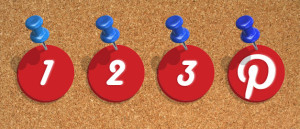Gamification is a huge buzzword in recruitment lately.
For those of you thinking this means discovering top talent by forcing applicants to compete in epic games of capture-the-flag… you’re half right! But I’ll give you a quick summary anyway.
Basically, gamification is about the use of game mechanics outside of traditional gaming (think Fitocracy and Free Rice not Monopoly, Mario, or Words with Friends). Gamification was one of the hottest topics in social media last year and it will be even bigger in 2013.
For recruiters and employers, gamification can be used in three main ways. To engage candidates, to assess potential talent and to train new hires. As an added bonus it can also promote employer brand. Gamification for training is nothing new, so I’m not going to write too much about that — think: learning how to type with Mavis Beacon.
Here are some cool examples of how employers are gamifying their training process!
Before we can discuss the specifics of how gamification can (and should) be applied to recruiting, we first need to go over what makes it successful. Especially when you consider new statistics that show how most of the gamified apps produced this year will probably fail (although I think that could be said about apps in general).
Don’t let that put you off gamification though, it’s not actually very complicated to use successfully. Really, I promise, you can totally do this, so long as you keep these three things in mind:
1) Content
You can’t just slap a mustache and overalls on a recruiter and call him Mario!
Badges, leveling-up, and snazzy game dynamics on their own, while decidedly trendy, will not hold your candidate’s interest for long. There must be a challenge, engagement, and an enticing reward, especially in a recruitment scenario. Don’t be like those banner ads that make you stomp a cockroach with your mouse, or throw a banana at a moving target, because we all know that the game is a sham, and the prize (an iPad!) is not real. That’s an extreme example, but it is good to remember that using game mechanics just for the sake of gamification alone, isn’t fun for anybody.
A great way to begin creating quality content is by thinking about the audience you are gamifying for, which brings us to point number 2.
2) Target audience
Who are you looking to attract? Hopefully you know the answer to this and have already tailored your recruiting efforts accordingly.
The Hotel Marriott’s gamified Facebook recruitment app is a great example of catering to a target candidate pool. Their app is FarmVille-esque — perfect for attracting Facebook users, as they are already familiar with the formatting. It’s cute, brightly-colored, and appeals to a more conservative crowd. It’s also simple enough that it won’t intimidate less game-savvy candidates. It’s pretty much the opposite of what I want in a game, but they aren’t looking to attract me, so it’s perfect.
On the opposite end of the spectrum, there’s the recruitment games created by the Swedish Army. They’re competitive, difficult enough to be engaging, and look like games I would play for fun (the voice-overs used in both games totally remind me of Resident Evil).
Something that both companies’ games have in common is that they give the recruiter insight about their potential candidates. The Hotel Marriot app has candidates virtually perform common hotel service industry tasks. If the candidates are successful, they level up to more problem-solving tasks that require the kind of decision-making skills necessary for employment at a management level. The Swedish Army’s game requires teamwork, problem-solving, time management and cognitive skills while under pressure. Both apps are pretty ingenious and quite successful.
3) Reward
Participation, or “participaction” (as I like to call it), doesn’t happen without incentivization. For a successful gamification effort, you’ll need to offer your participants a reward for playing. According to Taghd Kelly, the reward can come in the form of prizes, validation, and/or objective completion. In the case of recruiting, the obvious prize is a sweet new job.
Validation is more about giving participants a way to show-off to their peers. The Swedish Army’s game does this by letting players challenge friends to beat their scores and gives the option of posting their high scores on Facebook.
Completion, if handled well, is one of the best rewards that a company can use. LinkedIn’s 100% complete profile is a perfect example of this type of incentive. In order to have a 100% completed profile, users must explore and utilize different aspects of the site. Not only is this a great way of teaching new users how to use LinkedIn, it also increases the user’s time investment, which promotes continued use of the site.
Completion also works to gamify blogs!
You have now reached 50% completion of Jobcast gameification certification and are a level 2 recruiting elf.
Make sure to read next Monday’s post, so you can reach 100% and become a level 10 gamified recruit-wizard (pointy-hat not included).
Read More








